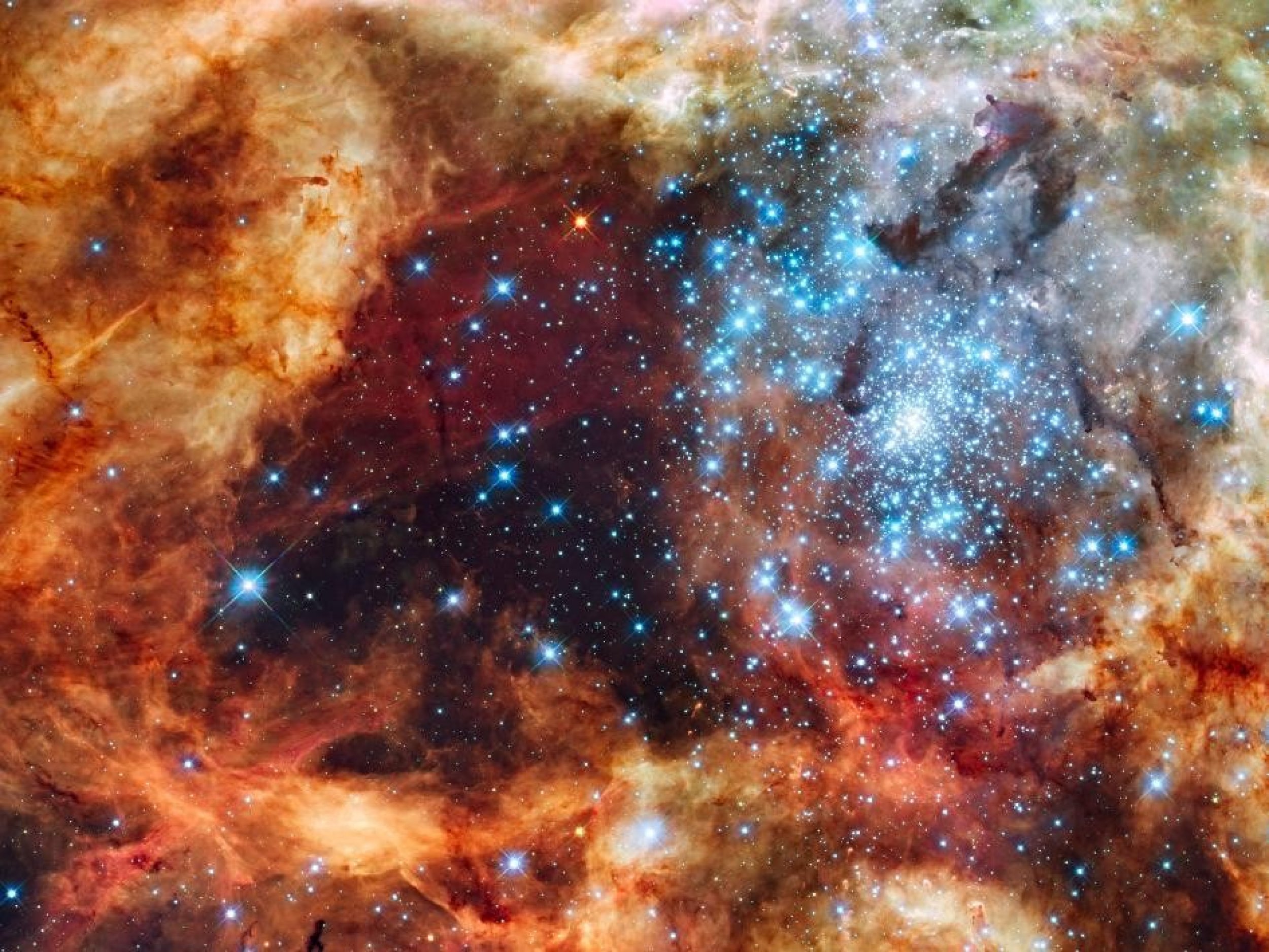Hubble Reveals Gigantic Star-forming Place Close to Milky Way
NASA unveiled on March 8, the image of a grouping of young stars called R136, which is located in the 30 Doradus Nebula, a part of tempestuous Large Magellanic Cloud (LMC). LMC is a satellite of the Milk Way galaxy and is the third closest galaxy to the Milky Way.
30 Doradus Nebula, which is located 160,000 light-years away from Earth, is known as the largest and most active star-forming region with great luminosity near our Milk Way Galaxy.
The combined data from Hubble's Wide Field Camera 3 in ultraviolet, visible and red light shows the image, which highlights the diamond-like icy blue sparkling stars. These are gigantic and weighty stars among the known. Many of them are 100 times greater than our Sun.
These hefty stars are destined to pop off, like a string of firecrackers, as supernovas in a few million years, NASA reported.
The nebula(30 Doradus) is close enough to Earth that Hubble can resolve individual stars, giving astronomers important information about the stars' birth and evolution, the space agency said.
Blue color indicates hottest light and most enormous stars; the green shows the oxygen glowing; and the red means fluorescing hydrogen.
This fantastic star-forming image stimulates our imagination. The brilliant stars are carving deep cavities in the surrounding material by unleashing a torrent of ultraviolet light, and hurricane-force stellar winds (streams of charged particles), which are etching away the enveloping hydrogen gas cloud in which the stars were born. The image reveals a fantasy landscape of pillars, ridges, and valleys, as well as a dark region in the center that roughly looks like the outline of a holiday tree. Besides sculpting the gaseous terrain, the brilliant stars can also help create a successive generation of offspring. When the winds hit dense walls of gas, they create shocks, which may be generating a new wave of star birth, NASA said.
These observations were made during Oct. 20-27, 2009.
See the Video Clip of 30 Doradus Nebula and the image of R136 below

© Copyright IBTimes 2024. All rights reserved.



















